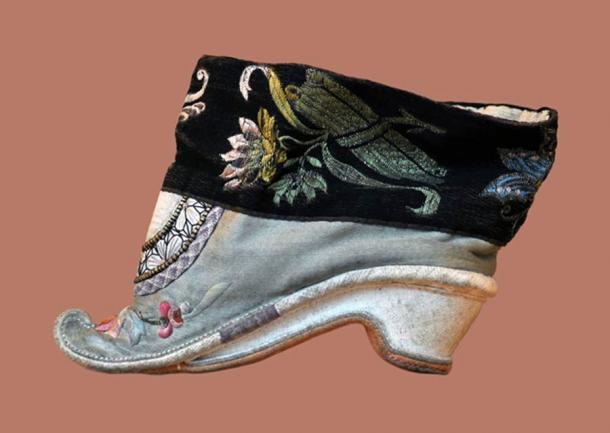Throughout history, men and women alike have suffered pain and agony in the name of beauty – from the practices of body modification in indigenous tribes throughout the world, to suffocatingly tight corsets in Europe, and modern practices of piercings, tattoos, and various forms of cosmetic surgery. But few of these practices compare with the ancient Chinese tradition of foot binding in terms of duration and agony. Today, there are few women remaining in China with bound feet, so Hong Kong-based photographer Jo Farrell set out in 2014 to capture the last traces of this ancient practice.
What are the Origins of Foot Binding?
The ancient origins of foot binding are not known for certain, but according to some accounts, foot binding goes back as far as the Shang dynasty (1700 – 1027 BC). Legend says that the Shang Empress had a clubfoot, so she demanded that foot binding be made compulsory in the court.

Results of food binding. (Credit: Jo Farrell )
However, historical records from the Song dynasty (960 – 1279 AD) date foot binding as beginning during the reign of Li Yu, who ruled over one region of China between 961 and 975 AD. It is said his heart was captured by a concubine, Yao Niang, a talented dancer who bound her feet to suggest the shape of a new moon and performed a “lotus dance.” When she bound her feet and danced on the lotus, the practice became very fashionable; after all, she was the emperor’s favorite concubine. The other concubines attempted to imitate her in order to gain the emperor’s favor.
By the 12th century, foot binding had become much more widespread, and by the early Qing Dynasty (in the mid-17th century), every girl who wished to marry had her feet bound.

Illustration showing Yaoniang binding her feet. Qing Dynasty woodblock print from ‘ Hundred Poems of Beautiful Women.’ ( Public Domain )
However, recent studies show that marriage was not the only motivation for this practice. Girls also had their feet bound to keep them at home and working on activities such as cotton spinning, which could supplement a family’s income.
Documenting the Lives of Women with Bound Feet
The practice fell out of favor in the early 20th century and was finally banned in 1911, however, foot binding continued in rural areas until around 1939.
There is now a rapidly dwindling population of Chinese women with bound feet who are still alive today, and a handful of them have been photographed as part of a photography project celebrating their lives.

Jo Farrell captured the results of the ancient tradition of foot binding. (Credit: Jo Farrell )
The pictures of the “lotus feet women, now aged in their 80s and 90s, were taken by Jo Farrell, and put together into a small art book, titled Living History: Bound Feet Women of China . “This project documents and celebrates the lives of the last remaining women in China with bound feet,” said Ms. Farrell. Farrell had met 50 women to photograph and three of them had died before the book was published in 2015.
“Although considered fairly barbaric, it was a tradition that enabled women to find a suitable partner,” Ms. Farrell explained. However, the practice also deepened female subjugation by making women more dependent on their husbands, restricting their movements, and making it impossible to venture far from home.

Chinese shoe for bound foot, 18th century. Musées du château des Rohan, Musée Louise Weiss, Saverne, France. ( CC0)
The Agonizing Process of Foot Binding
The process of foot binding typically began when girls were aged around four to six-years-old, before their feet were fully developed, and was often carried out during the winter months when the girls’ feet would be numb from the cold. Feet were soaked in a warm mixture of herbs and animal blood to soften them and toenails were cut back as far as possible. The toes on each foot were curled backwards and then pressed downwards and squeezed into the sole of the foot until the toes and arch broke and bandages were wound tightly around the foot, pressing the toes underneath. The feet would be unbound and washed regularly and the bandages reapplied even tighter.
Unlike most practices of body modification in which one suffers only for the duration in which the procedure is carried out, foot binding resulted in the life-long agony of an estimated 2 to 4 billion Chinese women over more than 1,000 years.
Their foot bones would remain broken for years, and were prone to repeatedly re-breaking. Toenails often cut into the sole of the foot leading to infection, and women with bound feet were much more likely to fall and break their hips and other bones. Many women who underwent foot binding were left with lasting disabilities.
Top Image: A Chinese woman showing her bound feet. Source: John C Bullas / CC BY-NC-ND 2.0
Related posts:
Views: 0
 RSS Feed
RSS Feed

















 April 2nd, 2021
April 2nd, 2021  Awake Goy
Awake Goy  Posted in
Posted in  Tags:
Tags: 
















